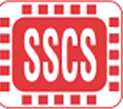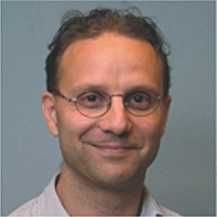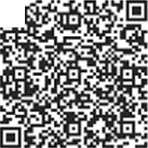4917953754
r


^ UJ
AGH
IEEE Solid-State Circuits Society Poland Chapter
invites for
Lectu re by Prof. Edoardo Charbon (TU Delft)
Single Photon Imagers
Wednesday, June lst, 2016, 9:30 Building B-l, lecture hall H24
Discover the radiation imaging detectors and pixel devices.

ALL STUDENTS ARE WELCOME
ATTENDANCE FREE OF CHARGE
The art of creating monolithic single-photon photodetectors is a mix of design skills and device physics knowledge, and it requires an understanding of the mechanisms underlying single-photon detection in highly complex integrated Systems. This lecture describes the basics of single-photon counting in complementary metal oxide semiconductors, through single-photon avalanche diodes (SPADs), and the making of miniaturized pixels with photon-counting capability based on SPADs. Some applications, which may take advantage of SPAD image sensors, are outlined, such as fluorescence-based microscopy, three-dimensional time-of-flight imaging and biomedical imaging, to name just a few. The lecture focuses on architectures that are best suited to those applications and the trade-offs they generate. In this context, architectures are described that efficiently collect the output of single pixels when designed in large arrays. Off-chip readout Circuit requirements are described for a variety of applications in physics, medicine and the life Sciences. Owing to the dynamie naturę of SPADs, designs featuring a large number of SPADs require careful analysis of the target applic^tion for an optimal use of Silicon real estate and of flmited readout bancfwidth.
/

Biography of the irtyrted speaker
Edoardo Charbon (SM'00) \
received the Diploma degree from ETH Zurich, Zuricp, Sviitzerland, the M.S. degree from the University of California at San Diego, San Diego, CA, USA, and the Ph.D. degree from the University of California at1 Berkeley,
Berkeley, CA, USA, in 1988, 1991, and 1995, respectively, all in electrical engineering and electrical engineering and Computer science. He is a consultant for numerous organizations, including Bosch, Texas Instruments, Agilent, and the Carlyle Group. He was with Cadence Design Systems, from 1995 to 2000, where he was an Architect of the company's initiative on information hiding for intellectuaf property protection. In 2000, he joined Canesta Inc.,
re he led the development of wireless 3-D CMOS image sensors. From 2002 to 2008, he was a Faculty Member with the Ecole Polytechnique Federale de Lausanne, sannę, Switzerland, where he was involved in research on


CMOS~sensors, biophotonics, and ultra low-power wireless embedded systems. In 2008, he joined Delft University of Technology, Delft, The Netherlands, as a Fuli Professor of VLSI design, succeeding _PgidcJk Dewilde. He has authored or co-authored over 250 papers in journals, conference proceedings, magazines, and two books, and he holds 18 patents. His current research interests include 3-D imaging, advanced bio- and medical imaging, quantum integrated circuits, and space-based detection. Dr. Charbon was a Guest Editor E|
Of the IEEE TRANSACTIONS ON COMPUTERAIDED DESIGN OF INTEGRATED '
CIRCUITS AND SYSTEMS and the IEEE JOURNAL OF SOLID-STATE CIRCUITS and a member of the Chair of Technical Committee of ESSCIRC, ICECS, ISLPED,
VLSI-SOC, and IEDM. He is a Distinguished Visiting Scholar with the W. M. Keck Institute forSpace, California Institute of Technology, Pasadena, CA.

Meeting venue
AGH University of Science and Technology Av. Mickiewicza 30, Kraków, Poland
Building B-l, H24 lecture hall, 2nd floor

Wyszukiwarka
Podobne podstrony:
1 ”1 1/J IEEE Solid-State Circuits Society Poland Chapter invites for AGHLecture / Keynote talkby
IEEE Solid-State Circuits Society Poland Chapter together with Department of Measurement and
IEEE Solid-State Circuits Society Poland Chapter together with Department of Measurement and
A♦IEEEInvited Lectures by Prof. Willy Sansen organized by the IEEE Solid-State Circuits Society Pola
Uf AGH IEEE Solid-State Circuits Society Chapter Poland together with Department of
iiIEEE Solid-State Circuits Society Poland Chapter together with Department of Measurement and
DL Willy Sansen Yisits SSCS Poland Chapter The IEEE Solid-State Circuits Soci-ety (SSCS) Poland Chap
4IEEE { lilii V.V AGHInvited Lectures by Prof. Bogdan Staszewski organized by the IEEE Solid-State
katarzynacichopek O • Obserwuj katarzynacichopek O Nie mogłam odmówić sobie r~i UJ h ii ■
lepkość MlMsytta Łvyftt op-.k. (+ SĘt ,m£aa) (£7y}R~i ■ z^ ij^u^ Cic c cliov ^upo-ip/y^i ■ Cu top uj
skanuj0154 (13) 288 B. Cieślar A
Zdjęcie035 2x* y + + Ir •! I* ♦ 2)r ♦ * * 2r «t 4ł-Jjr*2ł»l 4i»)>»2:*r» -5 «i u
Zdrowaś Maryjo Bogarodzico Zdrowaś Maryjo, Bogarodzico r£= rs> -1---w r~i J-r 1 _ i_o___&g
zelio rozruch 1`0 Ko cc«5« i
MG&09 -*wct-anie Ddkietów r~i
Image667 aii I T l I I Lniiunin»niJiinirE i i rE r~r~i i iuiiriininininir
image(2) jpeg J,4 Mt . -■« M- * t - *« ****** r■ -i™ «■) IMp.a» f*ł La
więcej podobnych podstron